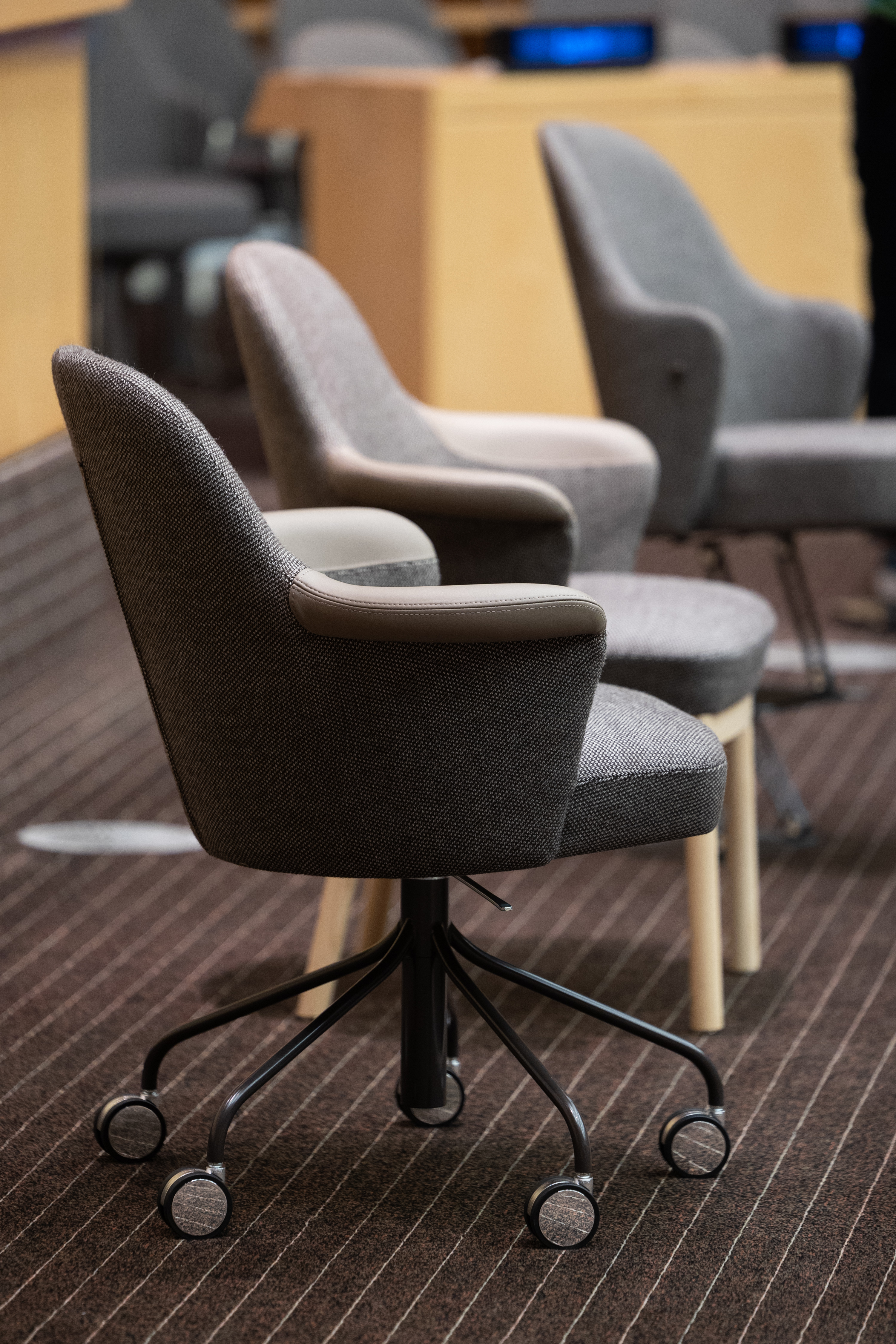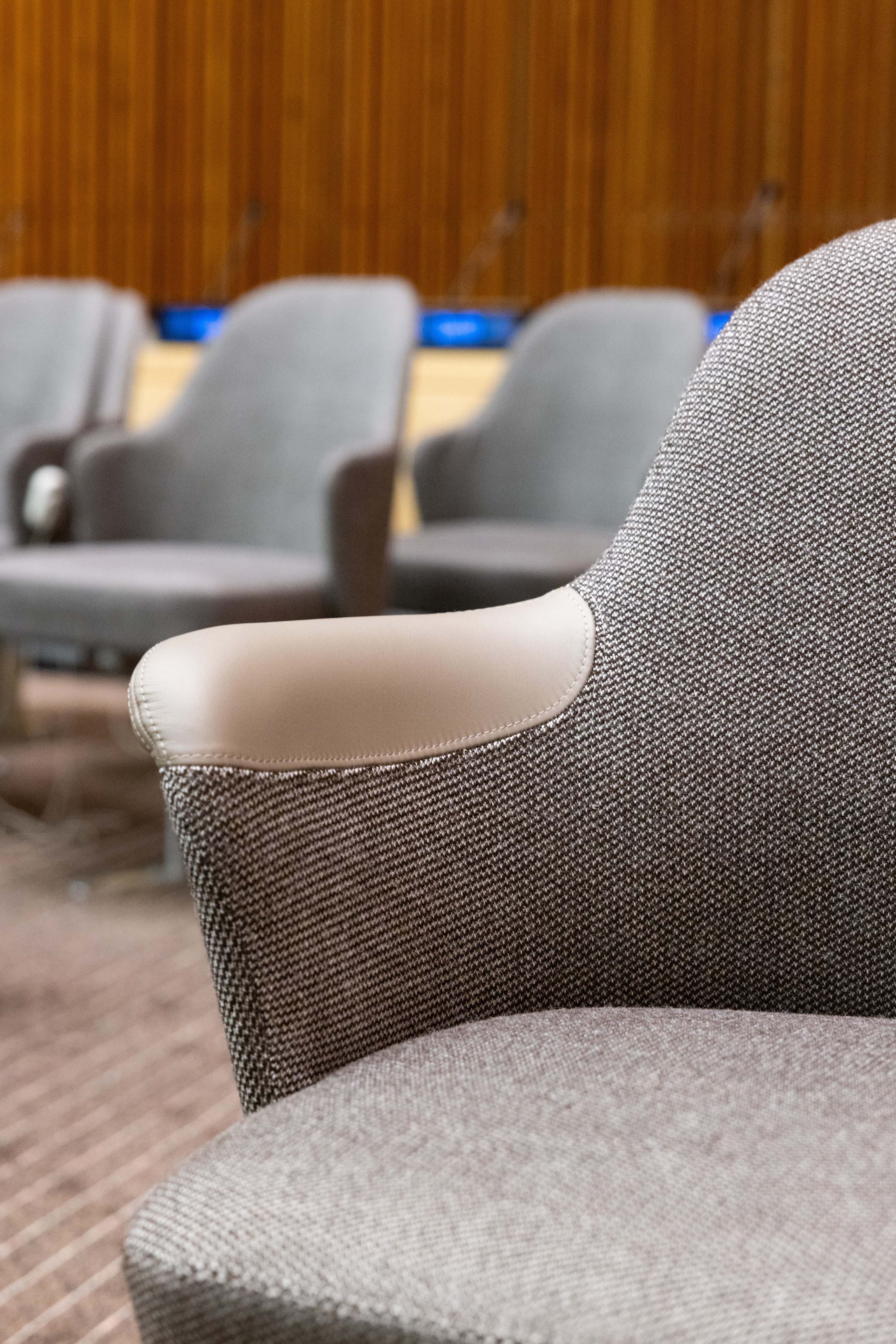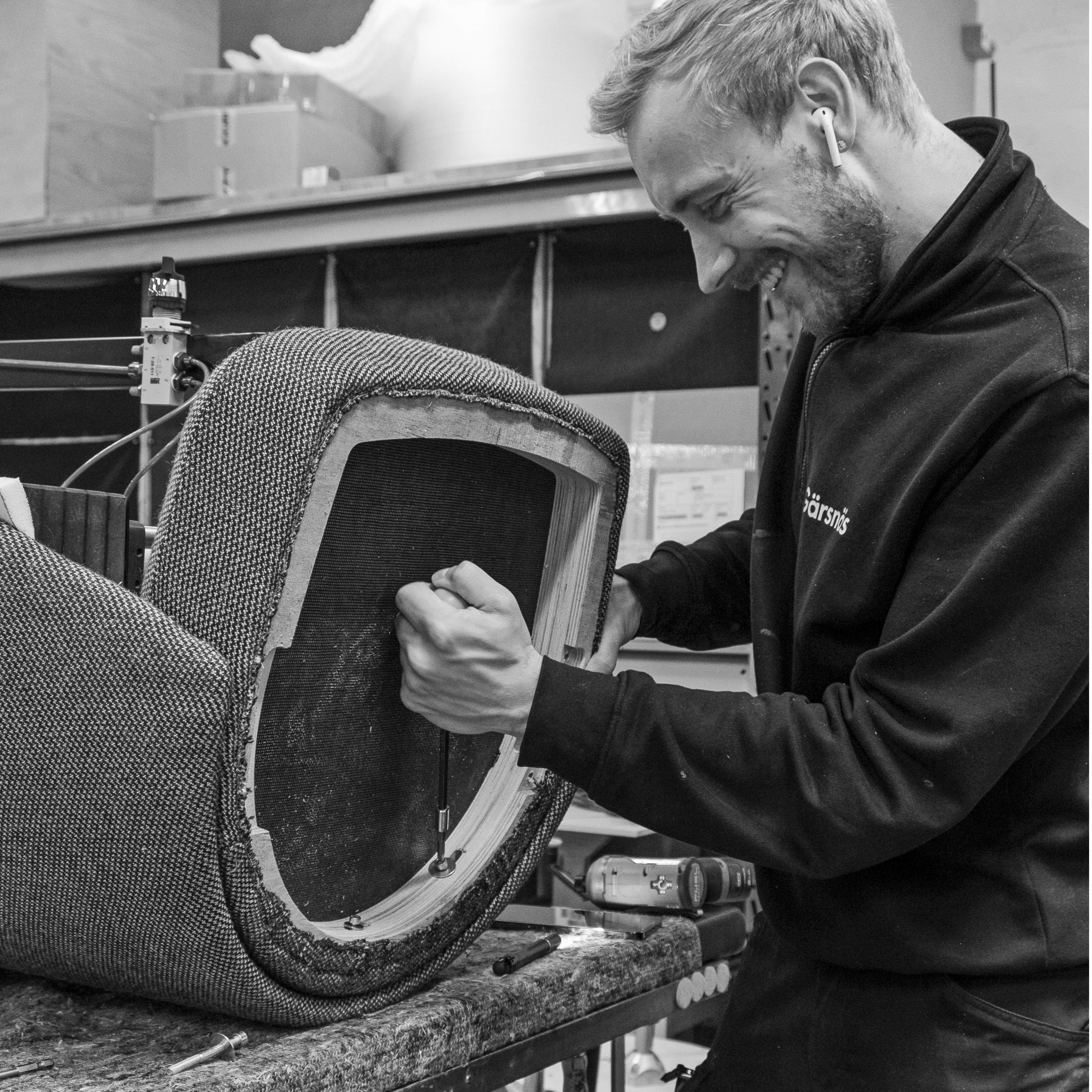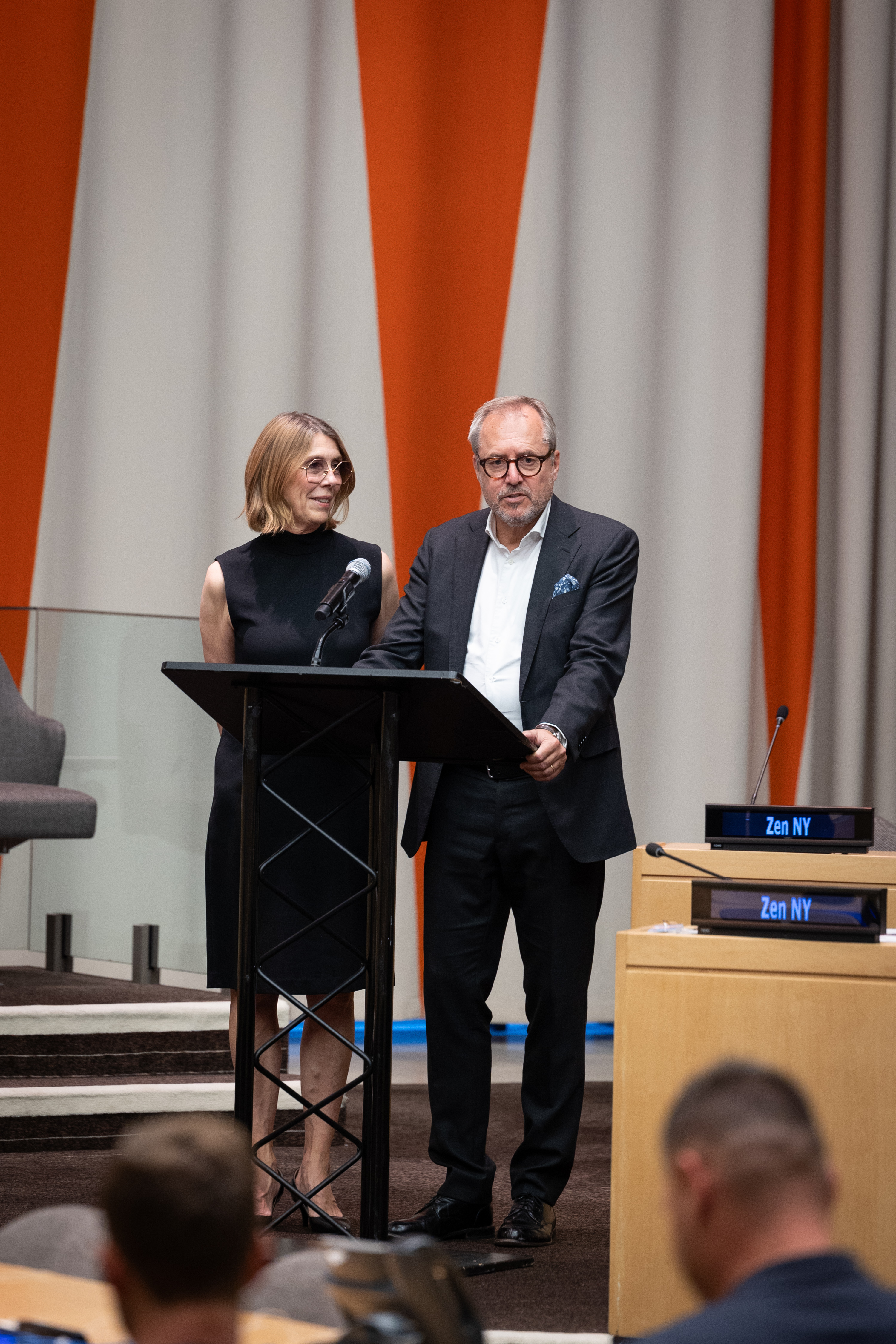New chairs in the ECOSOC chamber
The meeting chamber of the United Nations Economic and Social Council (ECOSOC) at the UN Headquarters in New York, designed by architect Sven Markelius in 1950, needed new chairs. That new chair is Zen New York, designed and developed by Åke Axelsson for furniture manufacturer Gärsnäs, on assignment by the Ministry for Foreign Affairs of Sweden, in consultation with a reference group including Svensk Form (the Swedish Society of Crafts and Design), the Swedish Institute, Public Art Agency Sweden, ArkDes (the Swedish Centre for Architecture and Design), the Swedish National Heritage Board and UN personnel.
The ECOSOC chamber at the UN Headquarters
In planning the UN building, soon after WWII in 1946, the world’s leading architects were invited to sketch and develop concepts that would represent humankind’s good aspects during the creation of a new world: cooperation, optimism, and democracy. From Sweden came Sven Markelius, one of the leading figures of Functionalism since the 1920s and 30s. He participated in the common conceptual work for the building and was assigned the specific task of designing the most important meeting room in the building: the ECOSOC chamber.
Sweden donated the interiors and has continued to ensure that the chamber is well maintained. Markelius created a theatre-like chamber with a view of the East River. The walls feature panels of pine wood. The ceiling’s fixtures and fittings are visible, creating greater room height and adding a painterly pattern. It was radical for that era.

The delegate chairs for the meeting tables were designed by Elias Svedberg, one of the big names in Swedish interior design from the 1930s to 1960s. The chair was rounded and stable with arms and legs in solid light ash.
The ECOSOC chamber is one of the busiest rooms at the UN Headquarters, meaning there is plenty of wear and tear. The Svedberg chairs have served the chamber well for more than 70 years, having been repaired and reupholstered. However, a careful inspection by the Swedish National Heritage Board proved they were beyond repair this time. A consulting reference group was established and began the work of assigning criteria and finding appropriate chairs. The main focus was on sustainability, aesthetics and ergonomics. The chairs would also need to be very durable under tough conditions. They chose Zen New York created by the doyen of Swedish furniture design Åke Axelsson and manufactured by Gärsnäs. A vital criterion was for the chair design to be based on an existing tried-and-tested model.
“It’s not just about designing a new chair, but gathering together and developing experiences. Therefore, Zen New York is based on a previous chair, Zen, where I strove for the simplest solutions. It has proven itself in all kinds of public contexts and is easy to adapt to completely new circumstances,” says Åke Axelsson, whose hands have borne a piece of furniture history, as the prototypes were made in his workshop. He is both a trained furniture maker and interior architect with a career spanning more than 65 years.

Several improvements were made at the request of the UN, for example, discrete grips on the arms to facilitate lifting and moving the chair. Much work has gone into the padding and seat cushion with a little more volume. Leather edging protects the tops of the arms. The chair is low maintenance. The undercarriage, seat and back are easy to disassemble. The fabric upholstery can be cleaned and changed if necessary.
The new Zen New York also bears traces of Svedberg’s chair. The chair back’s wave shape is a familiar feature. Likewise, the legs in light ash echo its predecessor. “It’s important that this new chair has a feeling of Scandinavian wood,” says Åke Axelsson.
“The backs of the Zen chairs make a soft wave shape in the room. The project’s keywords were friendly, generous and embracing,” says Lotta Cronsjö Gest, the project’s interior architect at the Ministry for Foreign Affairs.
The upholstery, Molly, is wool, in accordance with UN wishes, and has a discrete, shimmering, brown-beige pattern, designed by Åsa Pärson for Kvadrat.

The chairs are made at the Gärsnäs factory in southern Sweden and delivered by Input Interiör Stockholm. The order covers 240 stand-alone Zen New York delegate chairs, 190 chairs for advisors and 20 secretarial chairs. Now all chairs are the same model, in line with Markelius’ democratic concept that everyone has equal importance.

The inauguration of the ECOSOC chamber’s new chairs will take place at UN Headquarters in conjunction with the UN General Assembly. The Consulate General’s residence will also be hosting a design event with invited guests. Gärsnäs and Zen New York are the evening’s main attractions. A short film about Åke Axelsson will be shown, followed by a conversation on stage with Dag Klockby from Gärsnäs, as well as textile designer Åsa Pärson. The moderator will be Mats Widbom, CEO, Svensk Form.

